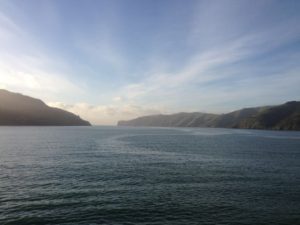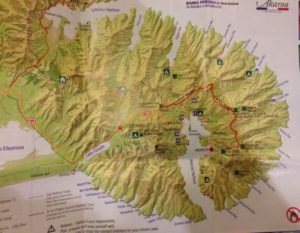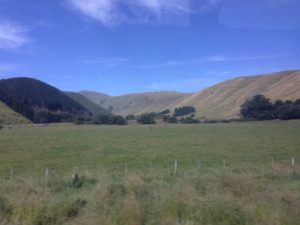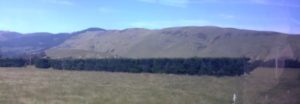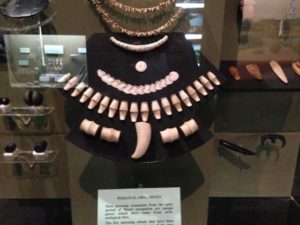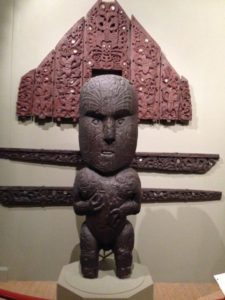Akaroa is another bay formed from caldera of an extinct volcano.
It is a lovely, small town surrounded by green mountains. It was settled by the French after a Frenchman bought most of Akaroa in 1835 and returned to France to organize settlers. By the time they returned in 1840, the British had signed a treaty that gave them control of NZ, but since the French purchase predated their control, the French were allowed to settle Akaroa and the Banks Penninusla. We tendered in early and walked the beautiful half-moon harbor before boarding our tour but that took us up to the ridge of the Caldera and over the mountains to the plains of Canterbury.
The plains are a fertile farming area that lies on the east side of the Southern Alps and is therefore is dry and windy because the rains drop on the west side of the Alps and the dry wind shoots down the mountains to the plains. To protect houses and livestock from the winds, the farmers plant thick shrub hedges. In the plains, we passed Lake Ellesmere, a huge shallow lake on which we saw hundreds of black swans. Unfortunately, the lake is dying because it’s connection to the sea was cut off by the eathquake.
After a 90 min ride, we arrived in Christchurch, which was devastated by a 2011 earthquake that destroyed much of the business district. The town in slowly recovering.
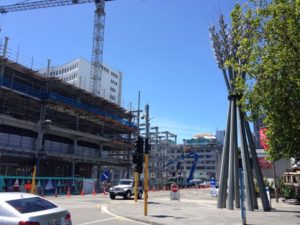 We got an introduction to Maori culture at the Christchurch Museum. The Maori, Polynesians who arrived between 900 and 1200, hunted the Moa, a large flightless bird to extinction.
We got an introduction to Maori culture at the Christchurch Museum. The Maori, Polynesians who arrived between 900 and 1200, hunted the Moa, a large flightless bird to extinction.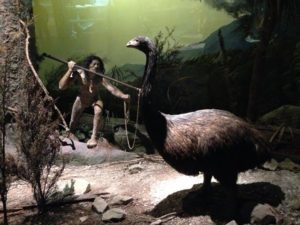
After Christchurch, we drove to Sumner Beach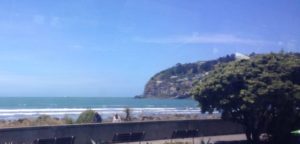 and then up into the hills to Cracroft Reserve, where we had a panoramic view over Christchurch. The area reminded me California, with its surfing beaches, expensive hillside houses, and views over the city in the valley.
and then up into the hills to Cracroft Reserve, where we had a panoramic view over Christchurch. The area reminded me California, with its surfing beaches, expensive hillside houses, and views over the city in the valley.




